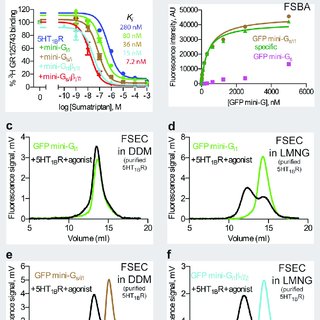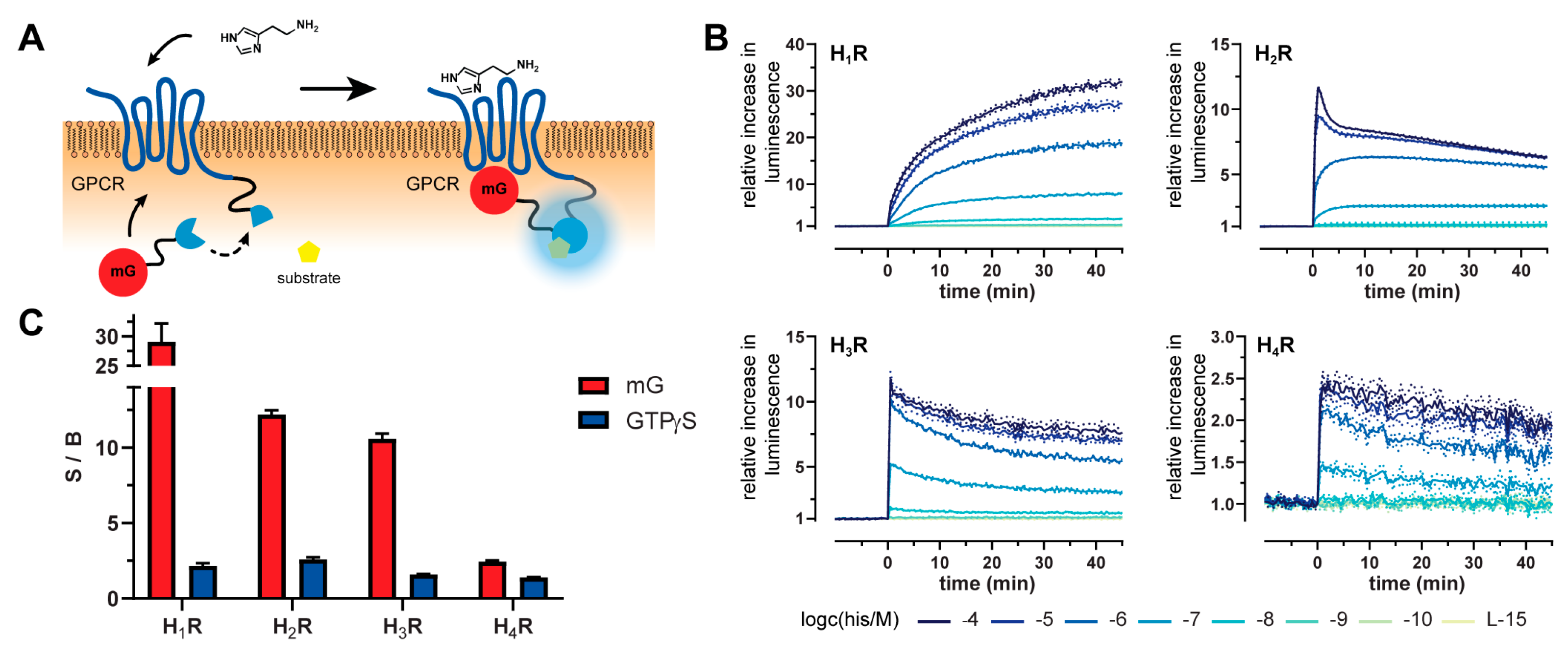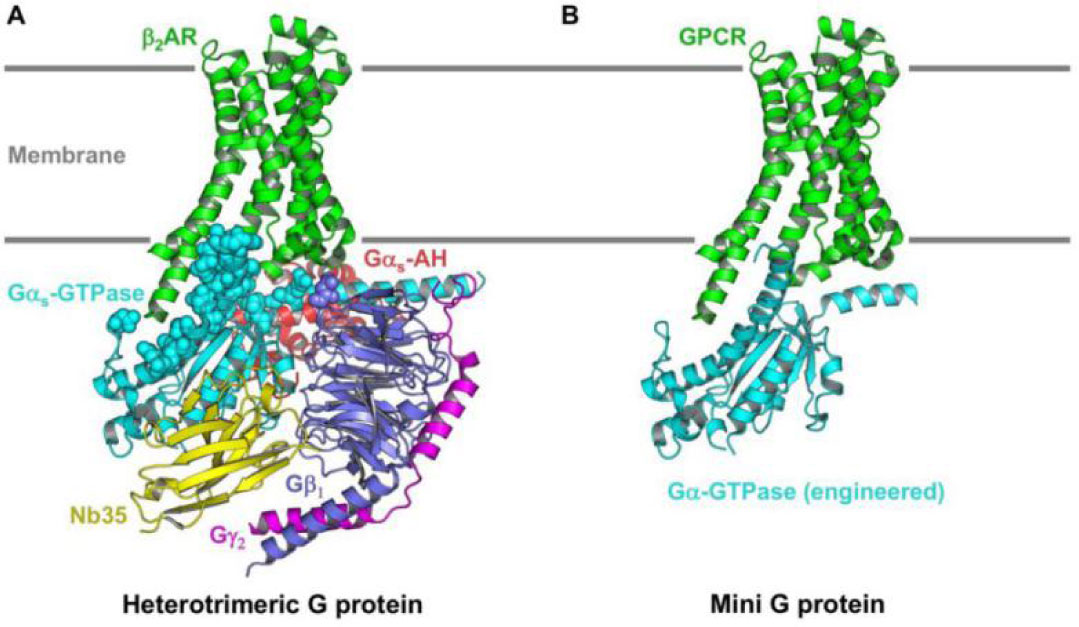Mini-G proteins: Novel tools for studying GPCRs in their active conformation
$ 14.00 · 4.8 (477) · In stock
Mini-G proteins are the engineered GTPase domains of Gα subunits. They couple to GPCRs and recapitulate the increase in agonist affinity observed upon coupling of a native heterotrimeric G protein. Given the small size and stability of mini-G proteins, and their ease of expression and purification, they are ideal for biophysical studies of GPCRs in their fully active state. The first mini-G protein developed was mini-Gs. Here we extend the family of mini-G proteins to include mini-Golf, mini-Gi1, mini-Go1 and the chimeras mini-Gs/q and mini-Gs/i. The mini-G proteins were shown to couple to relevant GPCRs and to form stable complexes with purified receptors that could be purified by size exclusion chromatography. Agonist-bound GPCRs coupled to a mini-G protein showed higher thermal stability compared to the agonist-bound receptor alone. Fusion of GFP at the N-terminus of mini-G proteins allowed receptor coupling to be monitored by fluorescence-detection size exclusion chromatography (FSEC) and, in a separate assay, the affinity of mini-G protein binding to detergent-solubilised receptors was determined. This work provides the foundation for the development of any mini-G protein and, ultimately, for the structure determination of GPCRs in a fully active state.

Gαq signalling from endosomes: A new conundrum - Daly - British

Residue 6.43 defines receptor function in class F GPCRs

PDF) Mini-G proteins: Novel tools for studying GPCRs in their

Nucleotide-decoupled G proteins reveal the role of G protein

IJMS, Free Full-Text

PDF) Mini-G proteins: Novel tools for studying GPCRs in their

Nucleotide-decoupled G proteins reveal the role of G protein

Current applications of mini G proteins to study the structure and

PDF) Mini G protein probes for active G protein-coupled receptors